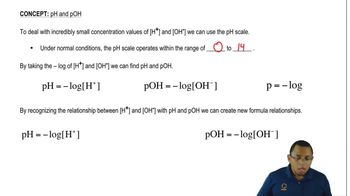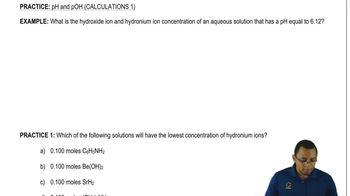Textbook Question
Determine each of the following for a 0.100 M HBr solution:
a. [H3O+]
 Verified step by step guidance
Verified step by step guidance Verified video answer for a similar problem:
Verified video answer for a similar problem:



 2:39m
2:39mMaster Strong Acids and Bases with a bite sized video explanation from Jules
Start learning